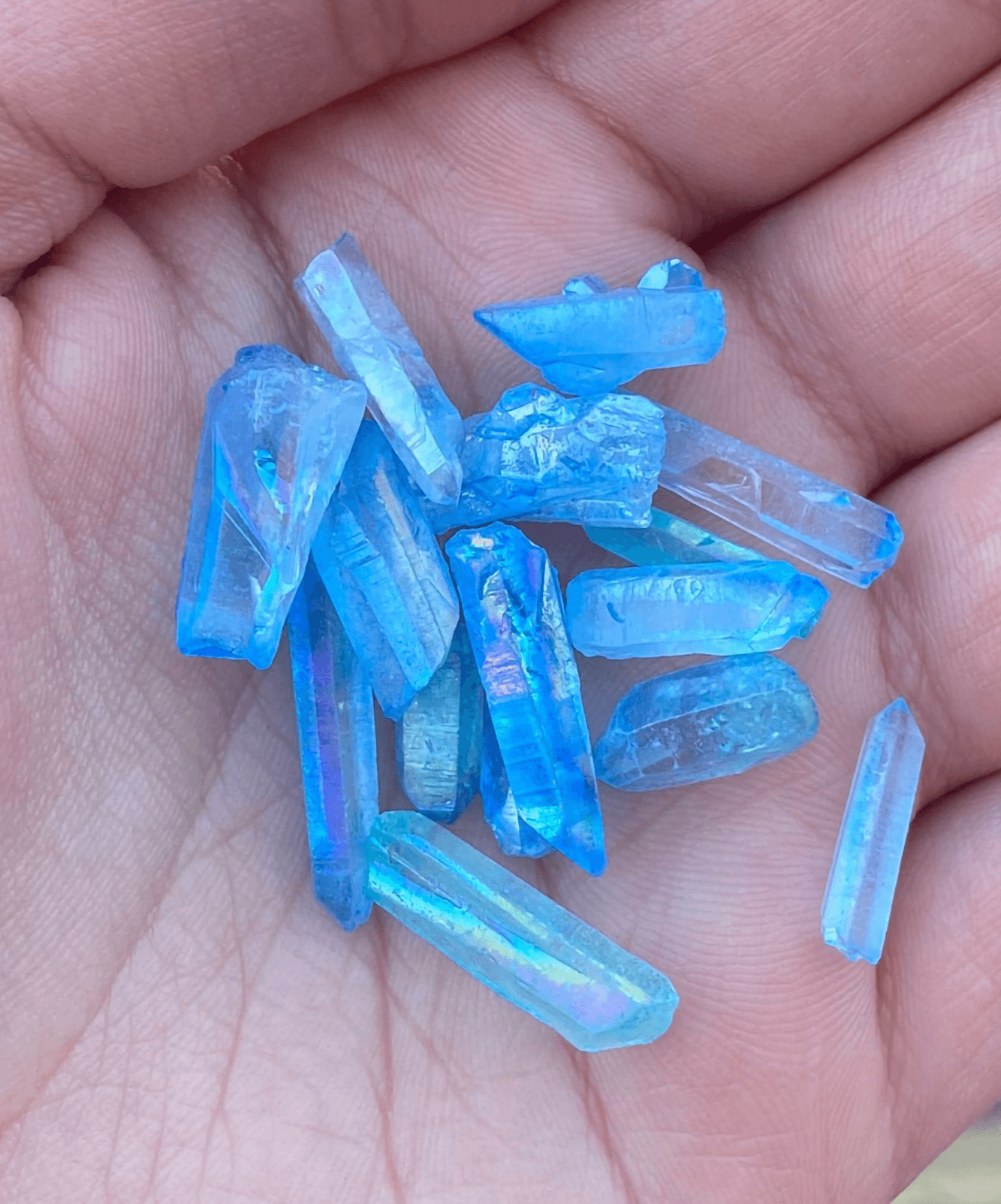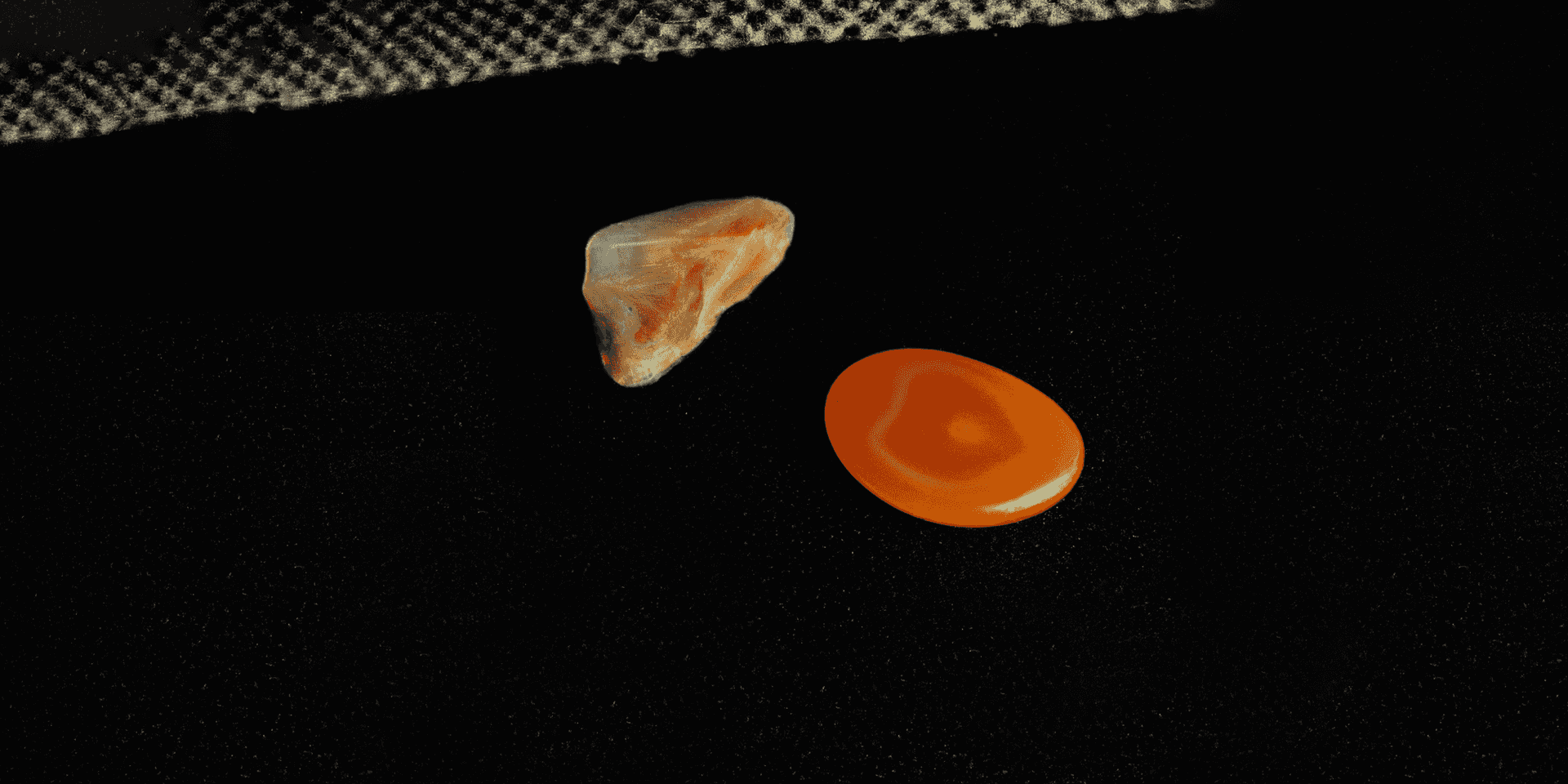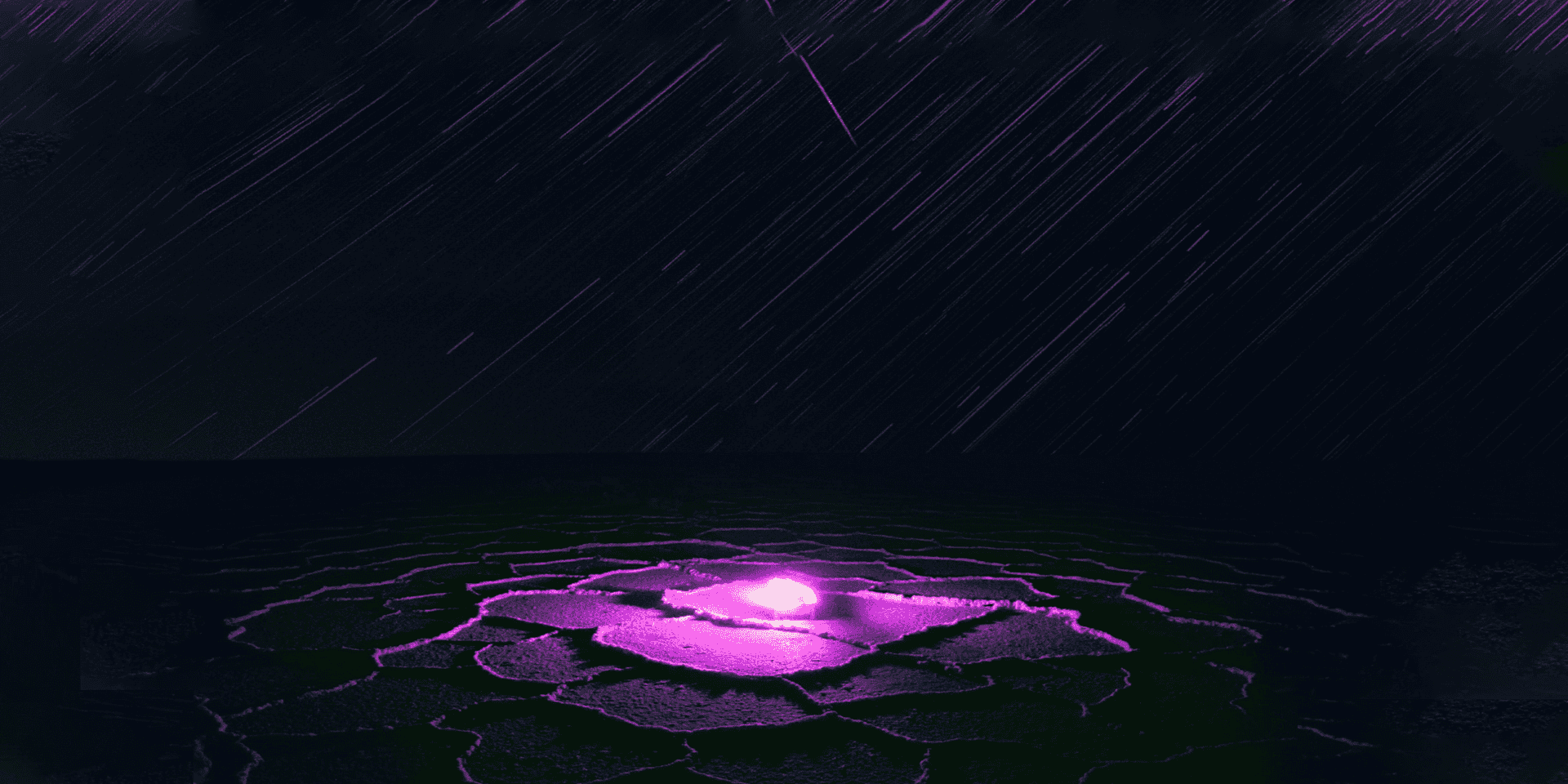
Siberian Blue Quartz
Siberian Blue Quartz has one of the most stunning blue colors you'll see from any stone. It's color and orgin are probably why it has such amazing properties like...
Quick Look:
Third Eye and Throat Chakra
Brilliant blue, similar to Sapphire
A solid block of uniform and smooth crystal
7 / 10 Rarity
Discovered in First produced in Russian labs sometime during the early 1990s
Mined in Made in many countries across the world
Chinese name: 西伯利亞藍水晶
What is Siberian Blue Quartz?
We're not here to mislead you. Siberian Blue Quartz is not a natural gem like regular Clear Quartz.
It's a regrown from a natural seed crystal using a method that mimics Nature's way of growing Quartz crystals.
The method uses high temperature and high-pressure water solutions to grow the crystal.
Mineral impurities are added to the alkaline solution (often Sodium Hydroxide) provide the crystal "food" for growth in the autoclave.
In order to get the deep blue color the crystal is famous for, Cobalt is added the stone's alkaline solution.
These minerals, and the environment in which is was grown is what makes Siberian Blue Quartz different than regular Quartz.
While regular Quartz helps balance all 7 chakras, the Siberian Blue variety has an preference for the Third Eye and Throat chakra.
We hope that this disclaimer has helped you understand what Siberian Blue Quartz is...
and what it isn't.
We also hope the rest of the article helps you understand how to take care of this gorgeous stone.
General Care for a Siberian Blue Quartz
Yes, this stone is regrown in a lab.
No, it's not unbreakable or perfect.
Despite it being going to "private school", this Russian quartz on scores a 7 on the Mohs scale of mineral hardness.
In simple terms, it can scratch your other crystals.
And they can scratch it.
So best to keep the little ones seperated.
If you haven't moved your piece of tumbled Siberian Blue recently, then it might look a bit lackluster...
That's because it's sad.
Oh, and because it needs to be polished!
How To Clean Your Siberian Blue Quartz Crystal
Here's some good news... your beautiful blue baby loves to take baths!
It kind of grew up in a bath now that I think about it.
Due to its incredibly uniform atom stucture, it does not react negatively to soap or vinegar.
Which is good because there ARE some minerals, like Limestone, that do react to acids.
But since neither raw nor tumbled Siberian Blue Quartz are harmed by vinegar...
It's bath time!
How do you give Siberian Blue Quartz a vinegar bath?
Let's keep it simple:
- Fill a small, cute bowl with warm lemon juice or vinegar.
- Let your piece soak in its little tub for awhile.
- Use a soft cloth and polish your crystal.
- Rinse the stone well under warm water and let it dry.
(Vinegar's smell will go away after a few minutes)
Will It Fade?
There are actually quite a few crystals that will fade with long time exposure to direct sunlight.
Corderoite, Brazilian Amethyst, and some forms of Sodalite are all sensitive to sunlight.
Real Siberian Blue Quartz will not fade in the sun.
So don't keep beautiful piece inside all day -- let it see the sun !
How to Charge Siberian Blue Quartz
This gemstone was grown in a bath (alkaline solution) so it only makes sense to charge it in a bath!
And since it's not entirely natural, we'll rule out a dirt bath.
So salt bath it is!
You can charge your Siberian Blue Quartz by putting it in a bowl of salt for 24hrs.
Since the stone is made in a lab, you don't even need to worry about salt falling into cracks!
Check If Your Siberian Blue Quartz Is Real
The main concern with Siberian Blue Quartz is not whether or not it's faked.
It's whether or not you've accidently picked up a different crystal!
There are a lot of blue crystals that look and feel similar:
Sapphire, Spinel, Tanzanite, and Kyanite just to name a few.
If you're confident you have the right crystal, then let's go ahead and check if it's real.
The first check is to simply touch it.
Does it feel cool to the touch?
Yes?
That's a good sign!
How To Do a "Fog Test"
If you’ve got a Siberian Blue and want to confirm it’s authenticity... just breath on it.
Yes, I know it sounds strange... but it works!
If it's a real Siberian Blue stone then the fog from your breath will evaporate almost instanstly.
But if it’s fake, then it'll take around 5 seconds to evaporate.
The fog test exploits the fact that fakes are made from glass, which holds moisture longer than the real stone.
How To Do a "Bubble Test"
Glass has another weakness we can take advantage of, it has bubbles trapped inside.
By examining your Siberian Blue closely you'll be able to see any bubbles inside.
Remember that inclusions are different than bubbles.
Because gemstones take so long to form, they will not have air trapped inside.
But making a glass gem without ANY air pockets inside is almost impossible.
Siberian Blue Quartz Healing Properties
Siberian Blue Quartz is a brilliant blue laboratory-regrown crystal created from Quartz and cobalt.
It is a powerful antidepressant, lifting the spirit and bringing deep peace.
Siberian Blue Quartz activates the throat and third eye chakras, stimulating psychic vision and telepathy and enhancing communication.
It brings about intense visionary experiences and opens to cosmic consciousness.
This stone helps you to speak your truth and facilitates being heard.
As an elixir it treats throat infections, stomach ulcers, and stress.
Applied externally, it relieves inflammation, sunburn, and stiff muscles.
Rarity
Although regular Quartz is extremly common, Siberian Blue Quartz is definietly not.
But we won't call it a precious stone, since it can be grown in a lab.
There are not very many labs that produce this particular crystal, which means the price is pretty high.
Smaller gems of Siberian Blue Quartz cost around $20 per carat.
Large pieces range from $20 - $40 per carat depending on the size of the crystal.
Quality isn't really a factor since the crystal are all grown the same way.





